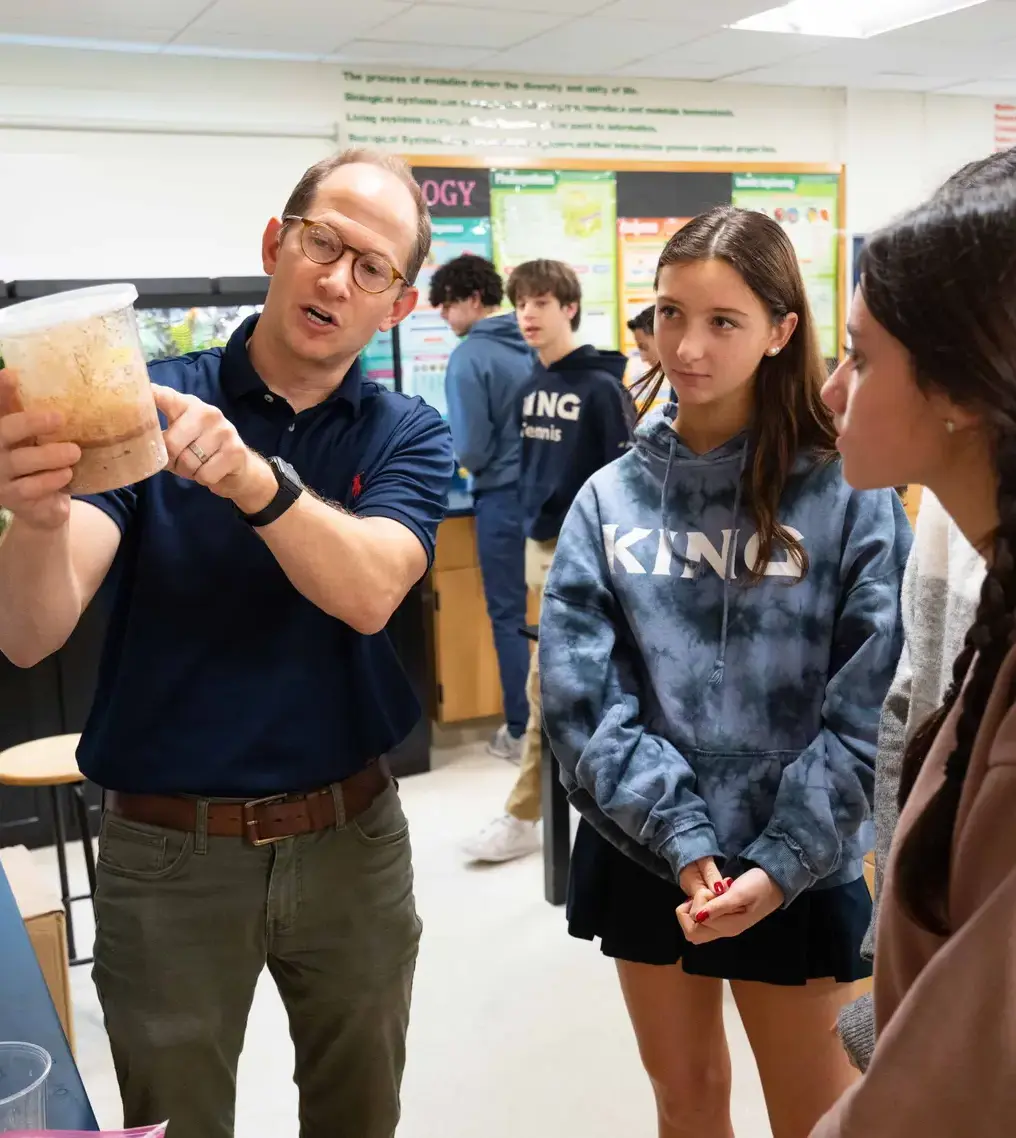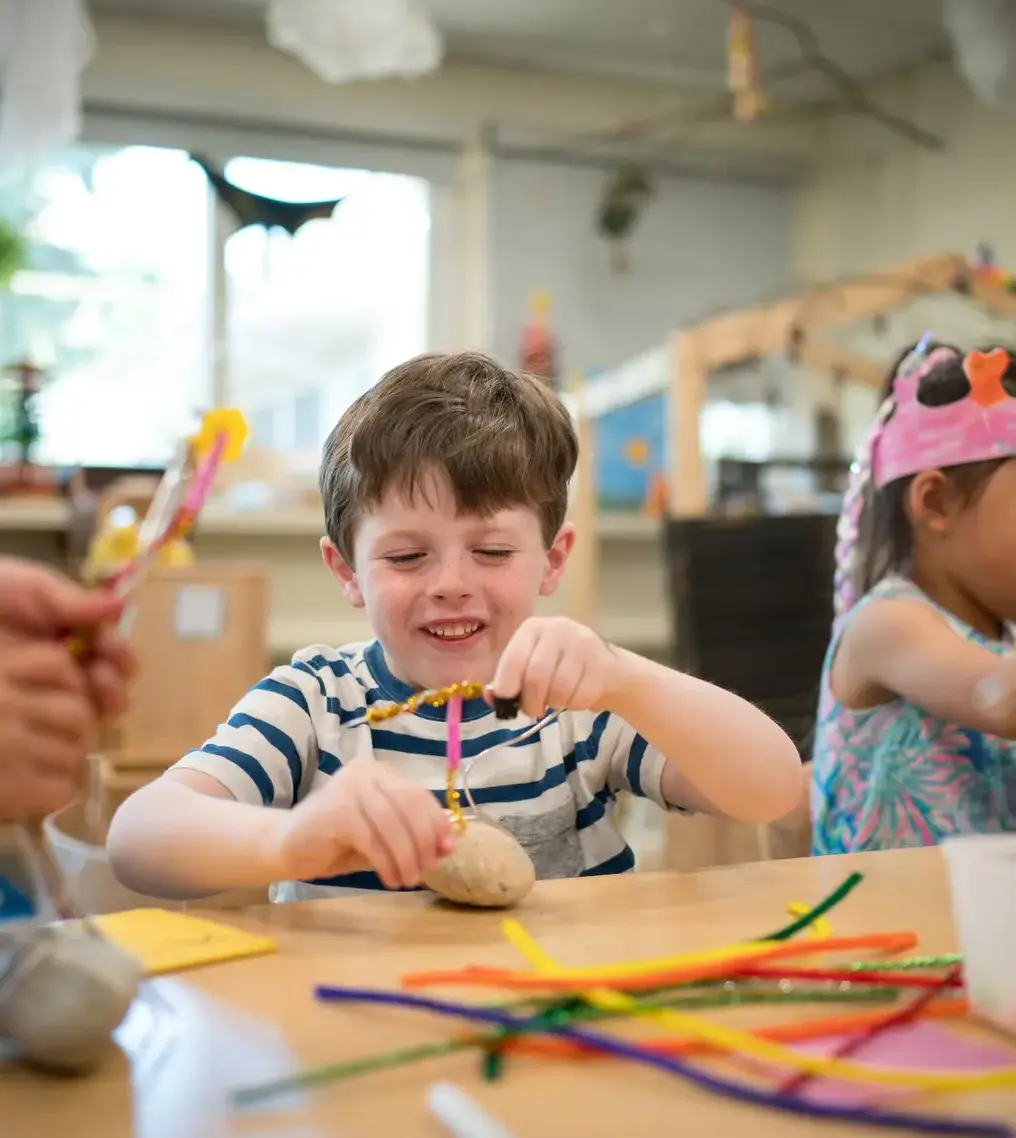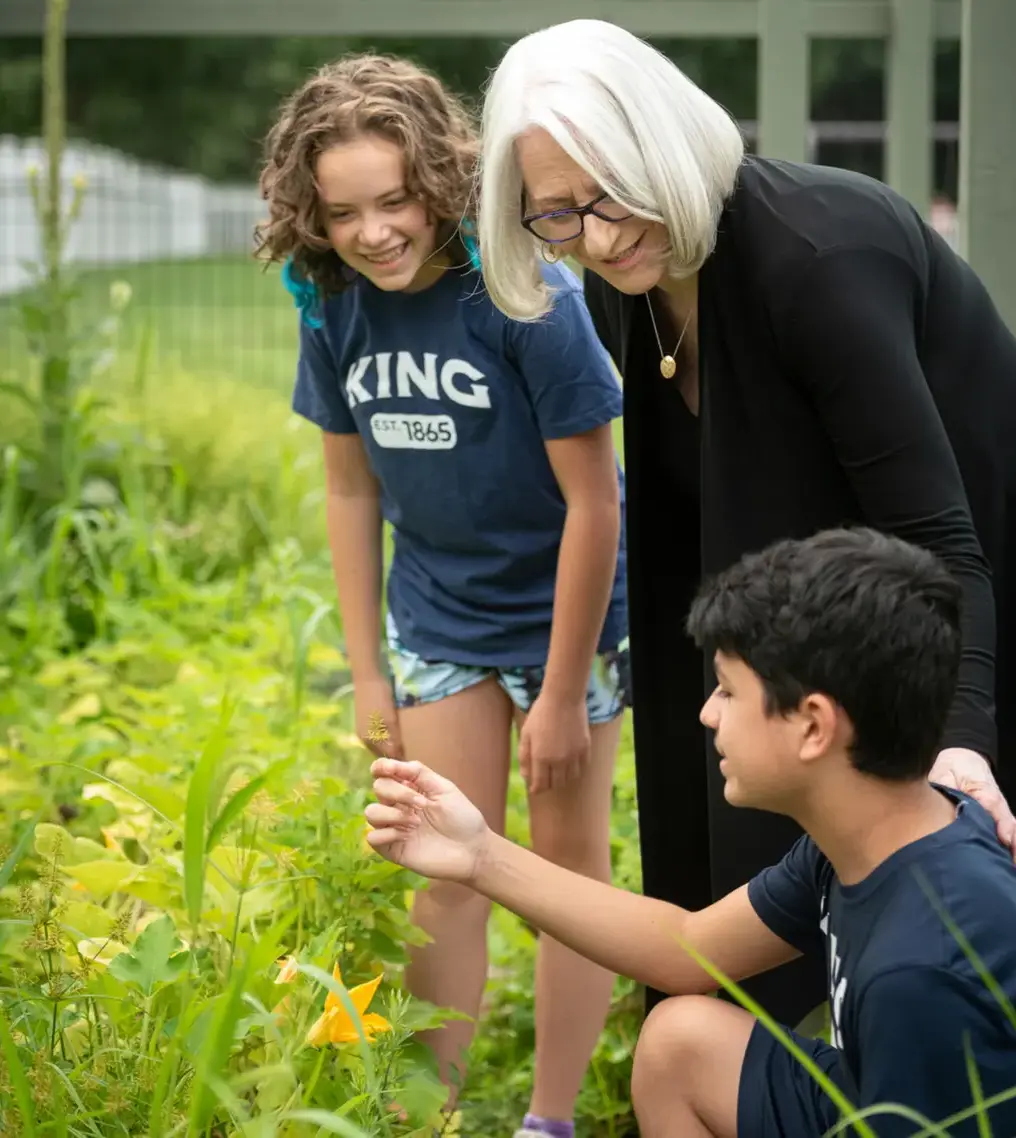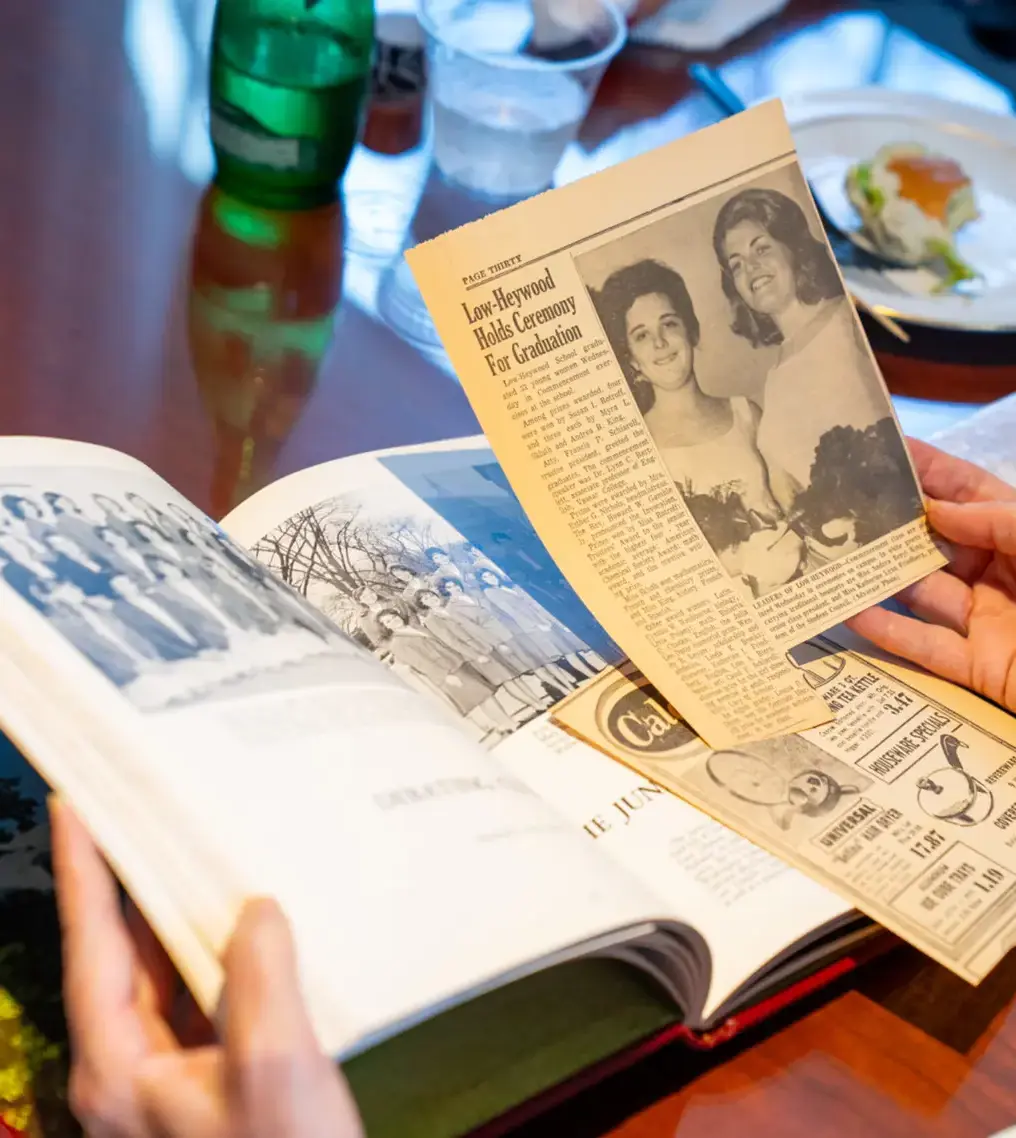From Classroom to Conservation: King School’s Frog Project Goes National
A Student-Led Initiative Making a Global Impact
From a Single Vivarium to a National Movement
What began as a single vivarium in an Upper School science classroom has evolved into a nationally recognized conservation effort. King School’s Frog Conservation Project, led by Science Department Chair and Project Director Nick DeFelice, has become a groundbreaking example of how student curiosity and perseverance can drive real-world environmental change.
The program, known for successfully breeding the critically endangered Oophaga lehmanni (red-banded dart frog) in 2022, has reached a new milestone — sharing its frogs and expertise with accredited zoos and aquariums across the country.
“This didn’t come from a textbook,” said DeFelice. “It came from student curiosity, perseverance, and the belief that a high school can make a global impact.”
First National Partnership: Jenkinson’s Aquarium
This past summer, the project officially donated two red-banded dart frogs and a custom-built 90-gallon vivarium to Jenkinson’s Aquarium in New Jersey, marking the first external placement of King-bred frogs.
Constructed entirely by King students, the vivarium represents years of innovation and problem-solving. It features a self-sustaining ecosystem with water features, misting and fogging systems, ventilation, and lighting, all designed to replicate the frogs’ native Colombian rainforest.
“Our team had to solve engineering challenges at every turn,” DeFelice noted. “But seeing our students’ work on public display and supporting a conservation institution is incredibly rewarding. Now, future builds will move even faster.”
Recognized by the Association of Zoos and Aquariums (AZA)
King’s frogs are now officially registered in the Association of Zoos and Aquariums (AZA) database, which tracks the lineage of endangered species in captivity. This recognition places King’s Frog Project within a national network of accredited institutions committed to ex situ conservation — protecting species outside their natural habitats.
Through this registration, King’s frogs can now be traced and bred by AZA-accredited zoos to help preserve genetic diversity and strengthen the species’ long-term survival.
Expanding Partnerships Across the Country
Building on this momentum, students are completing a 40-gallon vivarium for the Bronx Zoo, along with two more frogs, marking King’s second major donation of both habitat and animals.
Meanwhile, the team is working through partnership agreements with the Philadelphia Zoo and Buttonwood Park Zoo in Massachusetts. These collaborations aim to establish additional breeding populations and extend the project’s conservation reach even further.
On an international level, King maintains a long-standing relationship with the Cali Zoo in Colombia, the only facility in the world currently reintroducing Oophaga lehmanni to its native rainforest. Each year, King students send care packages filled with supplements, minerals, and lab supplies to support Cali Zoo’s breeding lab and fieldwork efforts.
A Thriving Population on Campus
Today, King’s on-campus vivarium is home to 11 red-banded dart frogs, including two new froglets that are just a month past metamorphosis.
Students monitor every detail — from humidity and pH levels to diet and growth — ensuring the health of each frog and the stability of the ecosystem. A key goal for the 2025–26 academic year is to establish a new genetic breeding line, helping maintain genetic diversity and ensuring the long-term success of the species in captivity.

Driven by Students, Fueled by Passion
The project is currently overseen by 15 Upper School students, each contributing their unique strengths — from habitat engineering and husbandry to scientific documentation, public education, and creative design.
For Nina Griffith ’27, a member since Grade 9, the project has become both a scientific and artistic pursuit.
“When I first joined, I expected it to be mainly about husbandry, but it was so much more than I imagined,” Nina shared. “I’ve connected it to my interests in art — from building and carving tank backgrounds to designing signage for museums and aquariums. There are so many opportunities within the program, and I love how you can customize your experience to match your hobbies and passions.”
Fellow team member Kate Johnson ’27 agrees, emphasizing the sense of community that the project inspires.
“Being part of a project that makes a difference while allowing me to learn has been inspiring,” Kate said. “Everyone in the club is motivated by the same purpose, which encourages collaboration and teamwork. It’s amazing to see what can be accomplished when a group of people works together toward a common cause.”
A Model for Conservation and Education
The King School Frog Conservation Project is more than a science experiment — it’s a living example of how education, research, and environmental stewardship can intersect.
Through hands-on learning, innovative engineering, and global partnerships, King students have transformed a classroom initiative into a national conservation network — one that connects young scientists in Stamford with zoological institutions and field researchers around the world.
“The success of this project is the result of our students’ curiosity, tenacity, and research mindset,” said Marnie Sadlowsky, Head of Upper School. “It’s a perfect example of how learning and collaboration can solve real-world problems.”
A Lasting Legacy
From its beginnings in a single classroom to its impact across continents, the Frog Conservation Project continues to prove that high school students can lead meaningful scientific change.
Through curiosity, compassion, and collaboration, King students are not just studying the natural world — they are actively helping to preserve it.
King School’s Frog Conservation Project
Where science, compassion, and innovation come together — one vivarium at a time.









